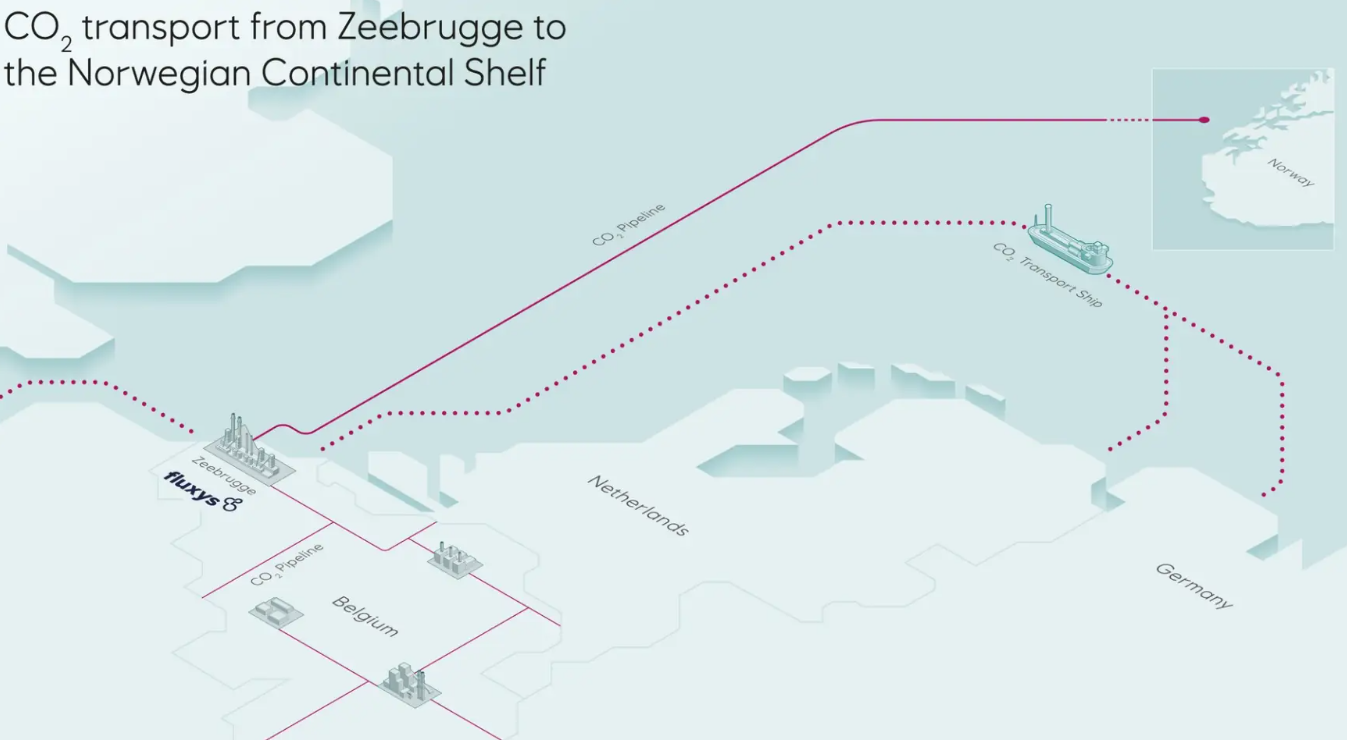Norway/Belgium – In order to move captured CO2 from emitters to secure storage facilities in the North Sea, connecting Belgium and Norway, Fluxys and Equinor have come to an agreement.
An investment decision on the project is anticipated by 2025, and it is currently in the feasibility stage. To significantly reduce CO2 emissions, carbon capture, transport, and storage (CCS) is necessary. The North-West European market is provided with a reliable and adaptable solution for large-scale decarbonization through this project by Equinor and Fluxys.
The project includes a 1,000 km CO2 export trunkline run by Equinor, which will move CO2 to the Norwegian continental shelf’s submerged seabed for safe, long-term storage. The onshore CO2 transmission infrastructure will be built and run by Fluxys, and the offshore trunkline will join it in Zeebrugge.
Growing demand for CCS
Emitters in Belgium and the surrounding nations will have the option to connect to secure CO2 stores in Norway thanks to the open-access CO2 transmission system. As the project progresses, liquefied CO2 transported from nearby hubs may be linked to the Zeebrugge facility, expanding the project’s geographic scope. Additionally, a pipeline branch to the port of Dunkirk is planned, and additional connections to other nations in North-West Europe will be examined.
By the end of this decade, Equinor and Fluxys hope to have the CO2 infrastructure project completed and ready for commissioning. The offshore pipeline is expected to be able to transport 20 to 40 million tonnes of CO2 annually, which will help to meet the growing demand for CCS from various European industrial players.
Businesses have access to an easy-to-use logistics chain from capture to storage thanks to the large-scale pipeline transmission solution. For large volumes of CO2, it is both economical and effective, and it offers lots of operational flexibility. To present the project, Fluxys and Equinor will speak with interested parties, such as significant emitting industries.





